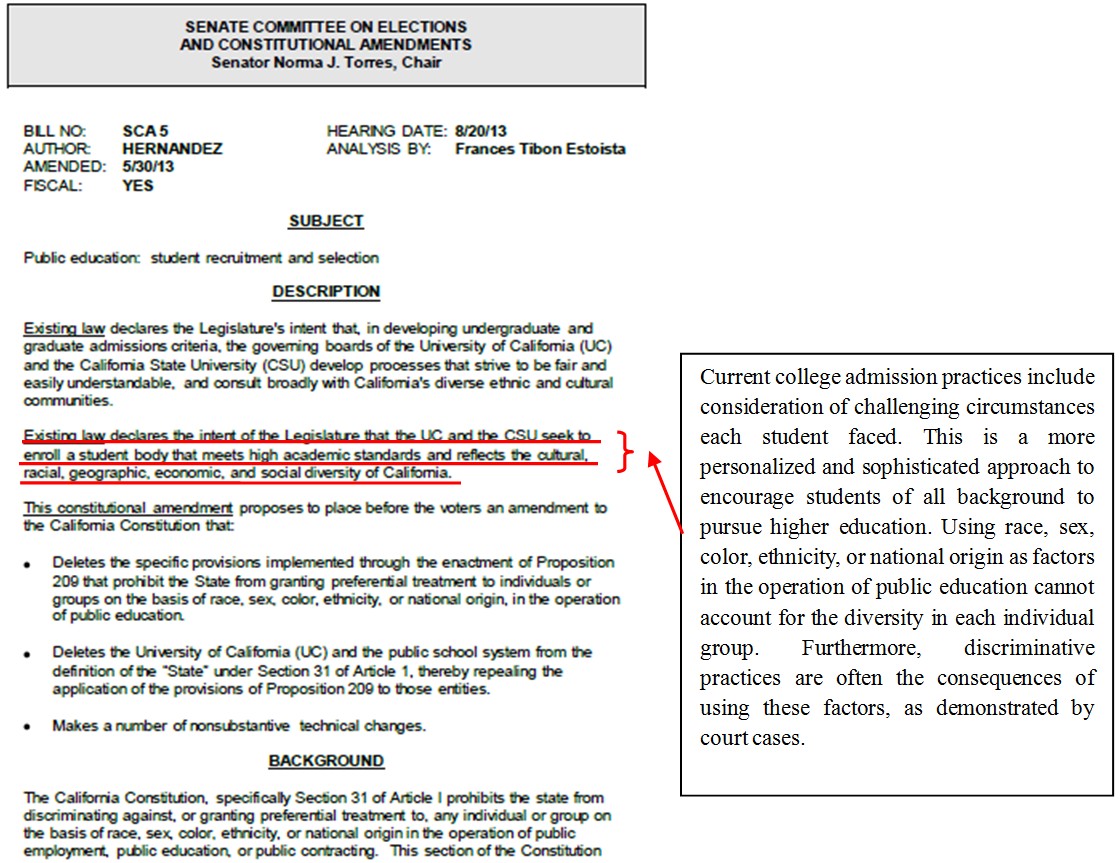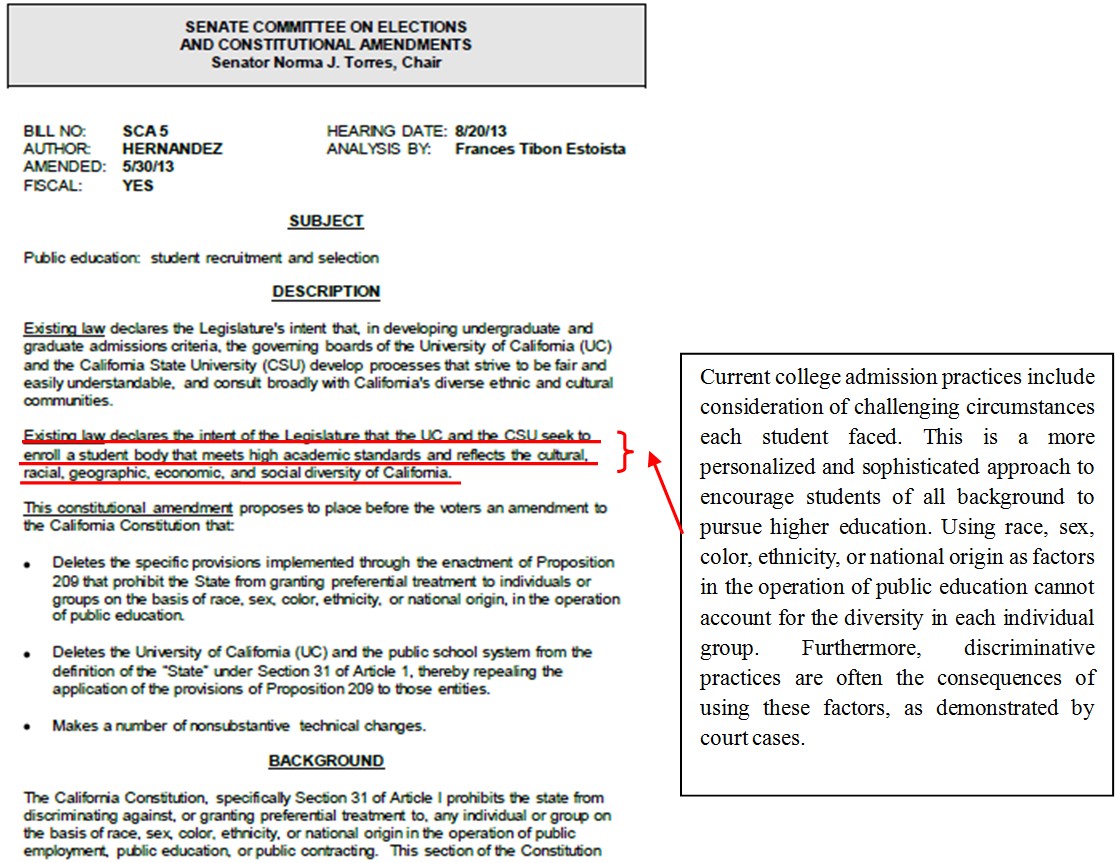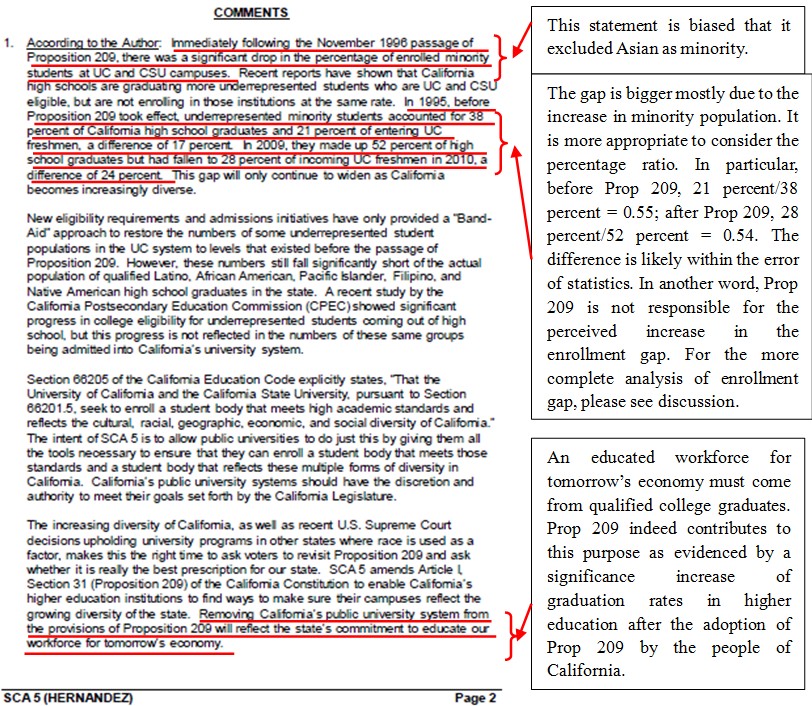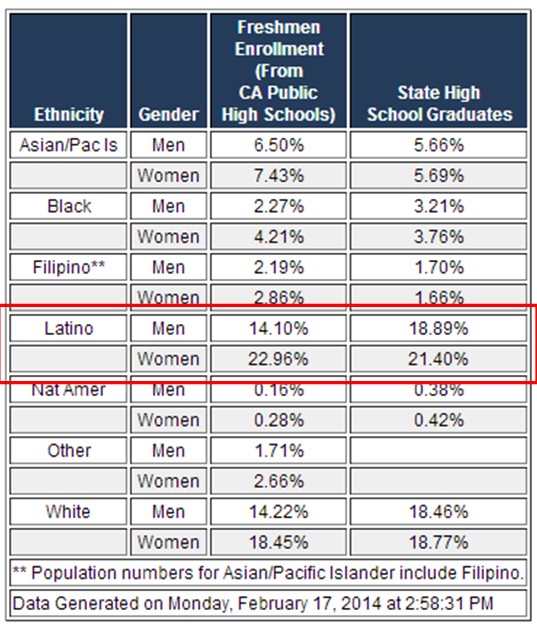Comments on Published SCA 5 Bill Analysis -- 刘宇
anonymous-114 02/18 8216
4.5/182 









1. Purpose
After the introduction of SCA 5 by State Senator EdHernandez(D), the bill has been read in various committees and the senate floor as well. In this process, a few bill analysis documents were published. By commenting on these documents, people will get a more complete picture of the issues at hand. A thorough debate on relevant issue helps people cast their votes better reflecting their common core interests.
The published bill analysis can be found online at http://leginfo.legislature.ca.gov/faces/billNavClient.xhtml?bill_id=201320140SCA5.
Although they provide useful historical data serving as justification of SCA 5,the scope of their analysis is neither comprehensive in scope nor valid inmethodology. It is the purpose of this comment to highlight the logical and factual shortcomings in the argument provided by the sponsors of SCA 5. Rather than attempting to close the case in one single text, this comment strives to provoke an in-depth discussion of the significance of upholding Prop 209 in public education.
2. Comments on bill analysis published by Senate Committee on Elections and Constitutional Amendments. Other bill analysis essentially contains similar arguments.



The remaining three pages of the bill analysis are omitted since they only provide a summary of court decisionsand past legislature attempts.
3. Arguments in Opposition of SCA 5 (from bill analysis published on the third reading the SCA 5):

As stated in this argument, Prop 209 led to “increased graduation rates in Higher Education by using race and gender neutral policies”. This is exactly what California needs in the new century. If public education is exempted from Prop 209, as attempted by SCA 5,history tells us that less students will graduate from higher education and become available for high-tech jobs. This will impair the quality of work force pool available to employers in California. Businesses will have to either hire from other states or countries to fill the openings, or outsource the job all together elsewhere.
4. Discussion
The fundamental reason that certain (notall) minority group youth accounts for a relatively smaller percentage ofhigher education enrollment is NOT Prop 209.
The percentage of minority high schoolgraduates that is admitted to UC campuses can be calculated as follows:

The enrollment ratio of minority is determined by two factors. The first factor is race neutral, meaning that the total number of available seats in UC campuses are limited. Increasing this factor can certainly promote the enrollment of minority students, but it is not affected by whether Prop 209 is in effect. Increase in higher education investment is one of the ways to increase this factor. Lack of funding in state higher education reduces this factor and thus the enrollment ratio. The second factor is related to racial distribution in student body, but, as is demonstrated by historical data, it is essentially the same (0.55 vs 0.54) before and after Prop 209 was adopted. It is thus premature to advocate the exemption of the public education from Prop 209 in order to promote the enrollment of certain minority students.
More investigation of the data provided by CEPC suggests other factors to consider. For example, the following figure provides diversity information from 2008 to 2010 in Cal State enrollment. For Latino women, although they account for 21.40% of state high school graduates,they represent 22.96% of freshmen enrollment from state high schools. In contrast, Latino men account for 18.89% of state high school graduates, but they only represent 14.10% of freshmen enrollment from state high schools. The opponents of Prop 209 often cite social-economical reasons that position certain minority groups at a competitive disadvantage in higher education.Coming from the same background, why women perform much better than men in Latino group? Note that women is not “favored” by the system, because Asian men is only slightly “worse” than women.

5. Summary
A diversified education environment provides significant developmental benefits to students. The proper way to achieve true diversity cannot be obtained without understanding the fundamental reason why certain racial and gender group is under represented. Data show that Prop 209 doesn’t change the race factor in the higher education enrollment. As a result, SCA 5 is not expected to achieve its stated purpose.
Even worse, statistical data prove that SCA 5 would undermine the quality of the workforce in California in the future,and hamper the growth of high-tech industry that has become one of driving forces of the state’s competitive advantage. Without a healthy economy providing enough funding for public education, all students suffer, and minority or under privileged group is probably hit harder.


